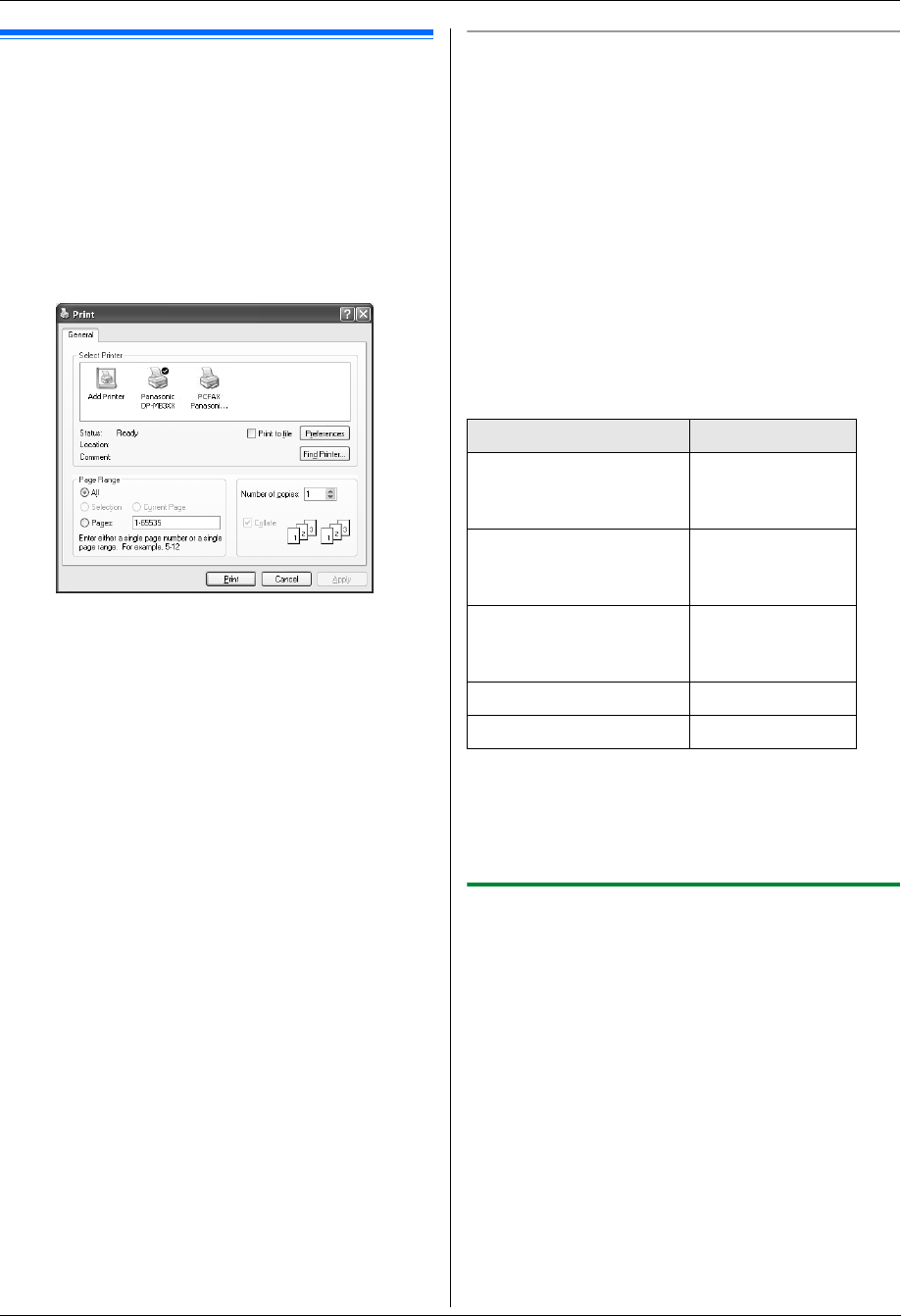
3. Printer
28
3 PrinterPrinter
3.1 Printing from Windows
applications
You can print a file created in a Windows application. For
example, to print from WordPad, proceed as follows:
1 Open the document you want to print.
2 Select [Print...] from the [File] menu.
L The [Print] dialog box will appear.
For details about the [Print] dialog box, click
[?], then click the desired item.
Note:
L For Microsoft PowerPoint
®
, select [Color] or
remove the check next to [Grayscale] in the
print dialog so that colored or gray objects will be
printed in grayscale properly.
3 Select the unit’s name as the active printer.
L If you have changed the name of the unit when
installing, select that name from the list.
L To change the printer settings, proceed as
follows.
For Windows 98/Windows Me:
Click [Properties], then click the desired tab.
Change the printer settings, then click [OK].
For Windows 2000:
Click the desired tab and change the printer
settings.
For Windows XP/Windows Vista:
Click [Preferences], then click the desired tab.
Change the printer settings, then click [OK].
4 Click [Print] or [OK].
L The unit will start printing.
Note:
L To stop printing from the unit, see page 78.
L To load paper, see page 14.
L For details about the paper specifications, see page
104.
L If a printing error occurs, the Device Monitor (page
78) will start automatically and display the error
information.
Setting the printer properties
You can change the printer setting in step 3. We
recommend that you test paper (especially special sizes
and types of paper) on the unit before purchasing large
quantities.
You can change or display the settings on the following
tabs.
[Basic]: Paper size, media type, duplex, etc.
[Output]: Number of prints, collate, etc.
[Quality]: Quality, contrast, toner save feature, etc.
[Effects]: Watermark, overlay.
[Profile]: Saving the desired settings, selecting the
saved settings, etc.
[Support]: Version information.
Note:
L Select the desired media type on the [Basic] tab
according to the recording paper.
L When printing from a computer, the printer
properties setting overrides the following unit’s
programming features:
– Media type setting (feature #383 on page 60)
– Toner save setting (feature #482 on page 61)
3.1.1 Duplex printing
For example, to print from WordPad, proceed as follows:
L Plain paper and thin paper can be used.
1 Open the document you want to print.
2 Select [Print...] from the [File] menu.
3 Select the unit’s name as the active printer.
L For Windows 2000 users, go to step 5.
4 For Windows 98/Windows Me:
[Properties]
For Windows XP/Windows Vista:
[Preferences]
5 Click the [Basic] tab.
6 Select the desired duplex layout. i [OK]
L Select [None] to deactivate this feature.
L You can also change the duplex margin.
Recording paper type Media type
Plain paper
75 g/m
2
to 90 g/m
2
(20 lb to 24 lb)
[Plain Paper]
Thin paper
64 g/m
2
to 75 g/m
2
(17 lb to 20 lb)
[Thin Paper]
Thick paper
90 g/m
2
to 165 g/m
2
(24 lb to 44 lb)
[Thick Paper]
Transparency [Transparency]
Label [Label]
